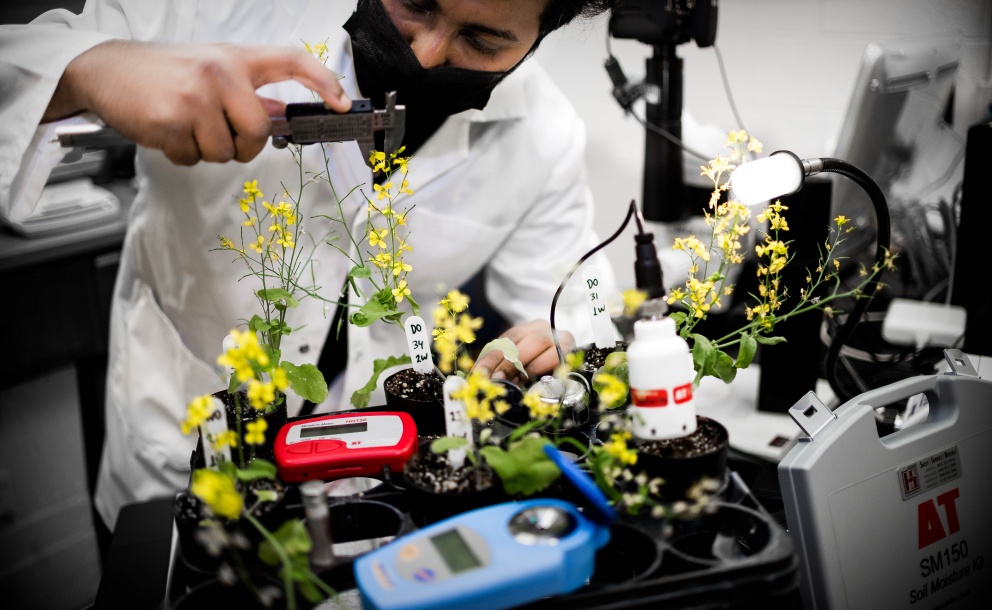Measuring the future today

Many studies predict climate change will likely alter rainfall patterns and increase the frequency and severity of drought events across ecosystems. Water available for plants can greatly impact the quality of these plant and flower characteristics and influence plants' attractiveness to pollinators. Visitors can detect these changes and alter their interaction patterns & flower visitation behaviour, affecting pollination success for plants and foraging efficiency for pollinators and, ultimately performance and reproductive success of both interacting partners. Therefore, exploring the responses of plants to reduced water availability will provide more accurate predictions of how climate change and drought impact flower–visitor interactions. Thus, we first needed to understand how plants respond to the water deficit.
In a UNB rooftop greenhouse, I planted 400 Wisconsin fast plants, which complete their life cycle within 30-45 days. I manipulated water availability and access to flower visitors inside the UNB rooftop greenhouse. As shown in the picture, I measured plant and flower characters, including floral nectar reward quality. Then by comparing plant and flower characters in watered and water deficit conditions in multiple generations, we explain the possible impacts of water availability for plants, pollinators and their evolutionary patterns in changing climates.